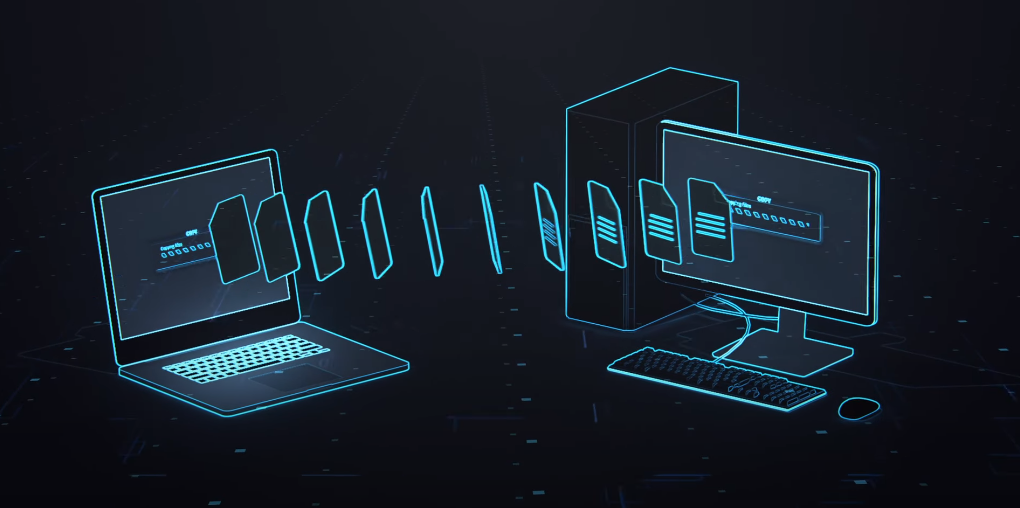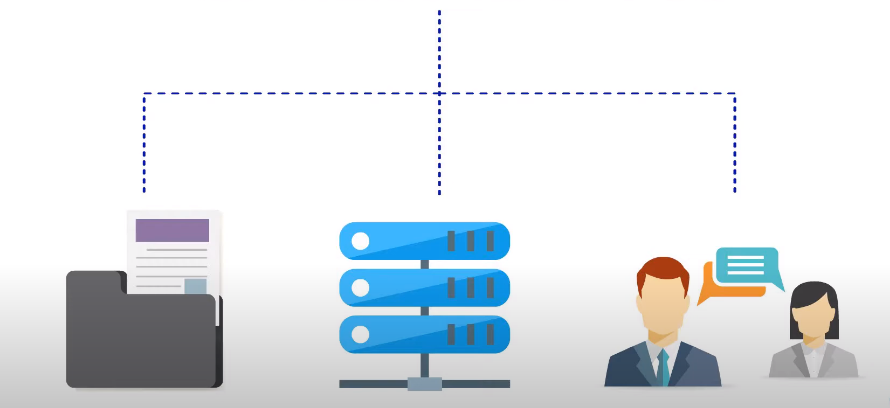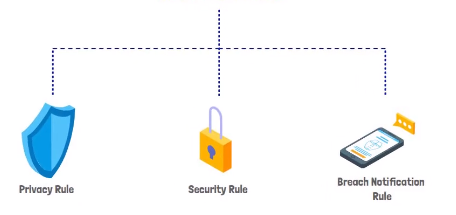Understanding the Basics of Non-Public Information (NPI)
Defining Non-Public Information (NPI)

Non-public Information (NPI) is a term used to describe any sensitive or confidential data that is not meant for public consumption. NPI can include personally identifiable information (PII), financial data, medical records, and other types of sensitive information that individuals or businesses need to protect from unauthorized access. In the financial sector, NPI refers to customer data held by banks, insurance companies, and investment firms.
The protection of NPI is critical in today’s world where cyberattacks are becoming more sophisticated and frequent. Businesses that deal with NPI must implement effective security measures such as firewalls, encryption, and access controls to safeguard their customers’ information from unauthorized access. They also need to adhere to legal requirements governing the handling of sensitive information such as the Gramm-Leach-Bliley Act (GLBA), Sarbanes-Oxley Act (SOX), or Health Insurance Portability and Accountability Act (HIPAA) depending on the industry they operate.
Examples of Non-Public Information (NPI)
An example of NPI is personally identifiable information (PII) which includes names, addresses, phone numbers, and email addresses. PII is commonly used by businesses for marketing purposes but must be handled with care to avoid data breaches. Another type of NPI is protected health information (PHI). PHI includes medical records and other private health-related information that should only be accessible by authorized personnel.
Risks and Threats to NPI
Data Breaches and Cyber Attacks

Data breaches occur when an unauthorized party gains access to NPI data. These breaches can be caused by various factors such as human error or technical vulnerabilities in systems. Cyber attacks, on the other hand, involve intentional efforts to compromise NPI data through malware or phishing scams.
The consequences of a data breach or cyber attack are severe for both individuals and businesses. Personal information can be stolen and used for identity theft, while businesses can face legal repercussions and loss of reputation. Therefore, it is vital to prioritize NPI data security measures to mitigate these risks.
Human Errors and Insider Threats
Human errors occur when an individual unintentionally makes a mistake that compromises the NPI data security. Some common examples include sending sensitive information to the wrong person or leaving confidential documents unattended.
On the other hand, insider threats are intentional actions taken by an individual with authorized access to a company’s network or systems, resulting in harm to the organization or its assets. Insider threats can take many forms, such as stealing sensitive data for personal gain, disclosing confidential information to competitors, or sabotaging critical systems.
Physical Security Threats
Physical security threats can come in various forms, including theft, vandalism, sabotage, or natural disasters like fires and floods. Physical security is critical in safeguarding sensitive information such as Non-Public Information (NPI) data that could be compromised by unauthorized access in the form of theft or destruction.
Regulatory Frameworks for NPI Protection
GLBA (Gramm-Leach-Bliley Act)
The Gramm-Leach-Bliley Act (GLBA) is a federal law that requires financial institutions to protect their customers’ nonpublic personal information (NPI). NPI includes any information that can be used to identify an individual, such as their name, address, social security number, or financial account number. The GLBA outlines specific requirements for how financial institutions must secure this data and notify customers in the event of a security breach.
Financial institutions must assess and address potential risks to the confidentiality and integrity of NPI data. This may include implementing access controls, encryption techniques, or other safeguards to prevent unauthorized access or disclosure of sensitive information.
In addition to technical security measures, GLBA also requires institutions to have policies and procedures in place for responding to security incidents. This may involve notifying affected individuals in a timely manner and taking steps to mitigate any damage caused by a breach.
HIPAA (Health Insurance Portability and Accountability Act)
HIPAA (Health Insurance Portability and Accountability Act) is a federal law that was enacted in 1996 to protect the privacy of personal health information. The law sets national standards for the protection of electronic health records (EHRs) and other health information. Under HIPAA, healthcare providers, insurance companies, and other covered entities are required to take reasonable measures to safeguard patient data.
One key aspect of HIPAA compliance is NPI (National Provider Identifier) data security. The NPI is a unique identifier assigned to healthcare providers by the Centers for Medicare & Medicaid Services (CMS). This identifier helps ensure accurate billing and tracking of healthcare services. To comply with HIPAA regulations, covered entities must establish policies and procedures for protecting NPI data from unauthorized access or disclosure.
GDPR (General Data Protection Regulation)
NPI data security plays a vital role in complying with the General Data Protection Regulation (GDPR). GDPR is defined as a set of rules and regulations developed by the European Union to protect personal data privacy. It applies to all organizations that collect, process, and store personal data belonging to EU citizens. Failure to comply with these regulations can result in hefty financial fines, loss of reputation, and other legal consequences.
To ensure compliance with GDPR, it is essential to have an efficient NPI data security system in place. This involves implementing robust technical and organizational measures for the protection of sensitive information. These measures include encryption techniques, access controls, backup systems, regular vulnerability assessments, and incident response plans.
CCPA (California Consumer Privacy Act)
The California Consumer Privacy Act (CCPA) is a comprehensive privacy law that impacts businesses operating in California. The act regulates the collection and sharing of personal information by companies and provides California residents with new rights regarding their data. Under CCPA, businesses must disclose what personal information they collect, how they use it, and who they share it with. Consumers have the right to request that their data be deleted or not sold to third parties.
NPI Data Security Measures
Encryption and Decryption Techniques
Encryption and decryption techniques are essential components of NPI data security. Encryption is the process of converting plain text into an unreadable code that can only be deciphered with a secret key or password. Decryption is the reverse process – converting encrypted code back to plain text using a secret key or password. There are several encryption algorithms available today such as Advanced Encryption Standard (AES), Data Encryption Standard (DES), and Rivest-Shamir-Adleman (RSA).
Access Controls and Password Management
Access controls and password management are also essential components of NPI data security. Access controls refer to the methods used to restrict access to sensitive information and ensure that only authorized individuals can view or handle it. This includes implementing user authentication, role-based access control, and other measures such as biometric identification.
Password management is also critical for protecting against unauthorized access. Passwords should be complex, unique, and changed regularly to minimize the risk of compromise. It is also important to enforce password policies such as minimum length and complexity requirements.
Intrusion Detection and Prevention Systems
Intrusion Detection and Prevention Systems (IDPS) can help to safeguard against unauthorized access to sensitive information. IDPS are designed to monitor network traffic in real-time, detect suspicious activity, and immediately respond by blocking or alerting administrators.
There are two main types of IDPS: Network-based and Host-based. Network-based IDPS examine network traffic at key points in the system, such as the perimeter or internal segments, and compare it against known attack patterns or abnormal behavior. Host-based IDPS focus on individual devices, such as servers or endpoints, and use software agents to analyze system logs for signs of malicious activity.
By deploying an IDPS solution that fits their business’s unique needs, organizations can protect their NPI data from cyber attacks while ensuring compliance with industry regulations.
Network Segmentation and Isolation
Network segmentation involves dividing a network into smaller subnetworks, each with its own set of devices and resources. This allows for better management of traffic, improved performance, and increased security by limiting the scope of any potential breaches.
Isolation takes this concept further by creating physically or logically separate networks that have no connection to one another. This approach is particularly useful for sensitive data as it can create an air-gapped environment that is almost impossible to breach without physical access.
Both techniques are essential components of an effective NPI data security plan. By segmenting and isolating networks, companies can significantly reduce their risk profile and ensure that confidential information remains secure from unauthorized access or theft.
Secure Software Development Lifecycle (SSDLC)
Secure Software Development Lifecycle (SSDLC) is a systematic and structured approach to developing secure software. The process includes a series of stages that ensure the security of the software at every step, from design to deployment. The goal of SSDLC is to minimize vulnerabilities in the software by integrating security into every phase of development.
Implementing SSDLC with NPI data security measures ensures that sensitive information remains protected throughout the entire development process. It includes implementing access controls, encryption mechanisms, secure coding practices, vulnerability assessments, and penetration testing activities conducted regularly during different phases of application development as well as before production release.
Best Practices for NPI Data Security
Regular Security Audits and Assessments
Regular security audits and assessments are essential to maintaining the integrity of Non-Public Information (NPI) data. NPI data is personally identifiable information that needs to be protected at all costs. It includes social security numbers, bank account information, credit scores, and other crucial personal details. Any unauthorized access or theft of such information can have serious implications for individuals as well as organizations.
Employee Training and Awareness
Employee training and awareness play a critical role in ensuring the security of NPI data. Employees must undergo regular training sessions to educate them about the importance of safeguarding sensitive information from cyber threats. They must also be made aware of the various types of cyber threats that exist and how they can recognize them.
Incident Response and Recovery Planning
An incident response plan outlines the procedures an organization should take in the event of a data breach or cybersecurity incident. It includes steps such as identifying the type and scope of the incident, containing it to prevent further damage, investigating its cause and extent, notifying affected parties and regulatory bodies if required, and implementing measures to prevent similar incidents from happening in the future.
Recovery planning involves restoring systems after a breach or disaster has occurred. This can include restoring backups of data that were unaffected by the incident or rebuilding systems entirely if necessary. Having both an incident response plan and a recovery plan are crucial for protecting NPI data security as they ensure that organizations are prepared to respond quickly and effectively to any cybersecurity threat or breach.
Third-Party Vetting and Due Diligence
Third-party vendors often have access to company data, making it important to ensure that they have proper security protocols in place. This is where third-party vetting becomes essential. Vetting involves evaluating a vendor’s security measures, personnel policies, and other relevant factors to determine if they meet the necessary standards for handling confidential information.
Due diligence is another aspect of NPI data security that should not be overlooked. It involves conducting ongoing monitoring and audits of vendors to ensure their continued compliance with established standards. Companies must take an active role in overseeing their vendors’ activities and promptly address any potential issues or concerns that arise.
Data Retention and Disposal Policies
Data retention policies outline how long certain types of data will be stored by a company, as well as the methods used for storage and retrieval. This ensures that sensitive information is not kept longer than necessary and reduces the risk of it falling into the wrong hands. Data disposal policies outline the methods used for securely destroying or deleting NPI when it is no longer needed.
NPI Data Security Compliance
NPI Data Security Auditing and Assessment
NPI Data Security Auditing and Assessment involves reviewing an organization’s existing policies, procedures, and technologies for safeguarding NPI data. An audit typically includes a comprehensive review of an organization’s IT infrastructure, applications, data storage systems, access controls, employee training programs and more. Based on the findings of the audit assessment reports are provided with recommendations on how to improve security measures to minimize the risk of unauthorized access.
NPI Data Security Certification and Accreditation
In order to achieve NPI Data Security Certification and Accreditation, companies must undergo an extensive evaluation process. This includes a thorough review of their current security systems, policies, and procedures. In addition, they must demonstrate their ability to protect sensitive information from unauthorized access or theft.
Once certified and accredited, companies are able to display proof of compliance with industry best practices for protecting sensitive customer data. This can provide customers with increased confidence in the company’s ability to protect their personal and financial information from cyber threats.
NPI Data Security Compliance Reporting
Compliance reporting involves providing evidence that a company has implemented appropriate safeguards and controls to protect NPI data in accordance with industry regulations such as HIPAA or PCI DSS. This can include regular risk assessments, employee training on data security policies and procedures, encryption of stored data, access controls to restrict who can view or modify NPI data, and incident response plans in case of a breach.
NPI Data Security for Small and Medium-Sized Businesses (SMBs)
NPI Data Security Challenges for SMBs
SMBs (Small and Medium-sized Businesses) face numerous challenges when it comes to NPI data security. One of the key challenges for SMBs is the lack of resources to implement robust data security protocols. Most SMBs have limited budgets and may not be able to afford expensive cybersecurity solutions or hire dedicated IT professionals with expertise in data security. As a result, they are vulnerable to cyber attacks such as phishing scams, ransomware attacks, and malware infections.
Another challenge faced by SMBs is the complexity of complying with regulatory requirements related to NPI data security. Various laws such as HIPAA (Health Insurance Portability and Accountability Act), GDPR (General Data Protection Regulation), and CCPA (California Consumer Privacy Act) mandate strict privacy regulations for businesses collecting or processing sensitive personal information.
Cost-Effective NPI Data Security Solutions for SMBs
Several cost-effective options are available that can help SMBs secure their NPI data without breaking the bank. Implementing multi-factor authentication for all employees can greatly enhance security by requiring more than just a password to access sensitive information. Creating regular backups of important files and storing them in secure locations will ensure that vital business information is protected from loss or damage. Regularly updating software and hardware with the latest patches and upgrades will close known vulnerabilities in systems that hackers could exploit.
NPI Data Security for Healthcare Providers
HIPAA Compliance for NPI Data Security in Healthcare

HIPAA (Health Insurance Portability and Accountability Act) regulations require healthcare providers to implement various measures to safeguard NPI data security. These measures include administrative controls like training employees on HIPAA policies and procedures, physical safeguards such as securing electronic devices that store patient data, and technical controls like encryption of patient data during transmission.
Best Practices for NPI Data Security in Healthcare
To maintain NPI data security in healthcare settings, it is essential to implement practices such as regular risk assessments, employee training programs on privacy policies and procedures, and secure electronic health record systems. Risk assessments help identify potential vulnerabilities in an organization’s system by evaluating its technical infrastructure and identifying gaps in security protocols. Employee training programs educate staff about HIPAA regulations, privacy policies, and procedures related to the protection of patient information. A robust electronic health record system helps safeguard NPI data by implementing encryption technology that secures sensitive information from unauthorized access.
NPI Data Security for Financial Institutions
GLBA Compliance for NPI Data Security in Finance
The GLBA requires financial institutions to develop comprehensive safeguards for protecting customer information. These safeguards must include administrative, technical, and physical controls that are appropriate for the size and complexity of the institution. Additionally, financial institutions must designate one or more employees to coordinate their information security program.
Failure to comply with these regulations can result in significant penalties from regulatory bodies such as the Federal Trade Commission (FTC). Therefore, it’s crucial for financial institutions to take a proactive approach to implementing GLBA compliance measures and ensuring NPI data security within their organizations.
Best Practices for NPI Data Security in Finance
To ensure NPI data security in finance, it is essential to adopt best practices such as encryption of data-at-rest and in-transit, multi-factor authentication protocols for access control, regular vulnerability assessments and penetration testing to identify weak points in systems or processes, limited access control permissions based on a need-to-know principle, behavior monitoring tools to detect unusual activity patterns that may indicate an attempted breach or hacking attempt.
Conclusion
NPI data security is a crucial aspect of protecting sensitive information in today’s digital age. Non-public personal information (NPI) includes any data that can be used to identify an individual or financial account, such as social security numbers, dates of birth, and bank account details. With the increasing frequency of cyberattacks and data breaches, it is imperative for businesses and organizations to prioritize NPI security measures.
Effective NPI data security protocols involve strict access controls, encryption methods, regular software updates, and employee education on best practices for handling sensitive information. In addition to protecting client or customer privacy, maintaining strong NPI security also helps companies comply with legal regulations such as the Gramm-Leach-Bliley Act (GLBA). By investing in robust NPI data protection strategies and staying vigilant against potential threats, businesses can safeguard their reputation and build trust with their clients.
FAQs
What Are The Consequences Of NPI Data Breaches?

A data breach can result in financial losses for the affected individuals as their accounts may be compromised, leading to unauthorized transactions or identity theft. This could lead to legal action being taken against the organization responsible for protecting its NPI data.
A loss of trust between the customers and the organization can occur which could lead to significant reputational damage. The media attention that often follows large-scale breaches can further tarnish an already damaged reputation. This lack of trust may also cause customers to take their business elsewhere resulting in lost revenue.
Organizations may face regulatory fines for failing to comply with various laws such as HIPAA (Health Insurance Portability and Accountability Act) or GDPR (General Data Protection Regulation). These fines could be substantial enough that they threaten an organization’s viability if they are not able to address them quickly.
Who Is Responsible For NPI Data Security?
When it comes to responsibility for NPI data security, it ultimately falls on the business owners or entities who collect and store sensitive information. These entities should have policies in place outlining how they handle NPI data and ensure compliance with HIPAA regulations. Employees working with NPI must also be trained on best practices to maintain proper data privacy.
It’s important to note that there may be third-party organizations involved in handling NPI data such as payment processors or IT service providers. In these cases, it’s still the responsibility of the initial entity collecting the sensitive information to ensure these third-party organizations are compliant with all regulations surrounding NPI data security.
What Is The Cost Of NPI Data Security Compliance?
The cost of NPI data security compliance can vary depending on the size of the organization and the industry they operate in. Compliance may require investments in hardware and software infrastructure, hiring cybersecurity professionals or consultants for risk assessments and audits, employee training programs on data protection practices, and implementing encryption technologies or other technical controls for securing networks and systems that store NPI data.
